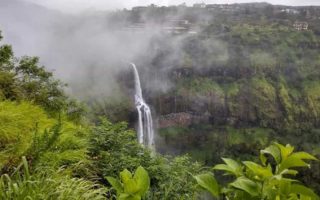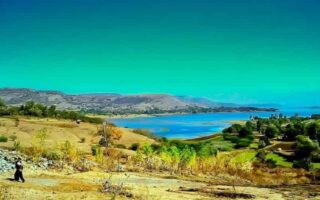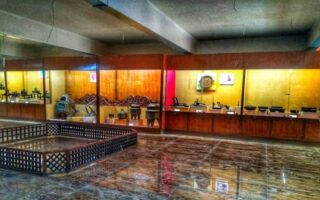Just as its art, craft, Culture, tradition, devotion, cuisines, and people at heart, Maharashtra is as rich when coming to wildlife in the state. As a place of interest for all nature and wildlife lovers, Maharashtra serves with a huge number of national parks and sanctuaries that dole out as homes for numerous and various wild creatures – terrestrial, avian and aquatic.
One can witness and experience facade with the wildest of creatures in the sanctuaries that shelter the wildlife of Maharashtra. These include species of the Crocodile, Sambar, Bison, Neelgai, Gawa, and Wild Deer. There are varieties of other creatures, like birds, in the collection of wildlife of Maharashtra. Birds seen in the Maharashtrian sanctuaries are inhabitant as well as migratory. There is avifauna found in a vast diversity in the wildlife havens in Maharashtra. The blazing colors of flying birds mesmerize the viewers. The terrestrial skills of animals and avian ones of birds are the major source of entertainment for visitors from all over the world. Few birds are well known to imitate the voices and sounds of other birds, which is an amazingly distinct characteristic here, among the wildlife of Maharashtra.
A few regions of importance in aspect of the wildlife of Maharashtra are discussed further, along with names of the wildlife sanctuaries and national parks, numerous to count, in Maharashtra, which serve as reserves for the astounding and rich, but scarce wildlife of the state and the nation. In Melghat, Amravati, there is a tiger reserve sanctuary, which takes care of few of the fewer tigers remaining in the country. Next is the wildlife sanctuary popular for its lush green hills, mountains and dales – the Nagzira Wildlife Sanctuary – which offers a colorful air, as in birds flying around in vibrant colors, their sights and flights mesmerizing the eyes while sweet sounds serving melodies to the ears.
Few more wildlife havens in Maharashtra, to list, are the Navegaon National Park which is located in the Navegaon region of Maharashtra, the Tadoba National Park in the Vidarbha, which is also called ‘The Jewel of Vidarbha’ and the Gondia forests in the Vidarbha region again.
Want some refreshment? Well, you need to visit the Sanjay Gandhi National Park in Mumbai, the ultimate paradise for tree and greenery lovers. A huge variety of diverse trees will enchant your eyes and mind. Karnala Bird Sanctuary, Nayagaon Mayur Sanctuary, Chikhaldara Wildlife Sanctuary and others are few more gems in the crown of wildlife of Maharashtra. A splendid opportunity to view an array of delightful wildlife havens, in their own magnificent natural setting, in Maharashtra – I’m sure you wont miss it.
Anerdam Wildlife Sanctuary
Tips on clicks:
- Located on the Bombay- Agra Naional Highway in Shirpur Tehsil of the district Dhule in Maharashtra.
- Major attractions are the sanctuary and the environment, which is the Paradise for Nature Lovers.
- Ideal season to visit this place is from November to February.
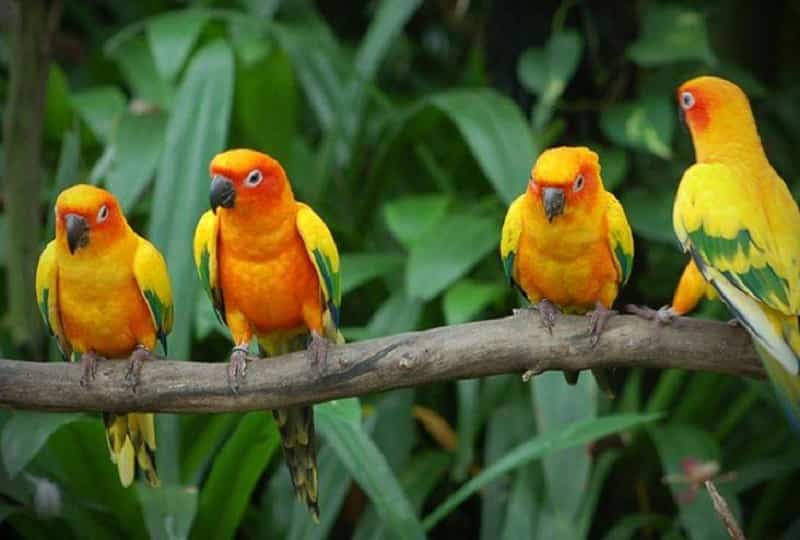
One of the major attractions of the state of Maharashtra in India is its vivid wildlife. And one of the best wildlife sanctuaries in state is the Anerdam Wildlife Sanctuary, which is located on the Bombay- Agra Highway, in Shirpur Tehsil of the Dhule district in Maharashtra. It lies to the southwest of the Satpura ranges and shares its margins with the Yawal sanctuary and a few other sanctuaries in Madhya Pradesh. By the look of it, the place looks more than just a wildlife sanctuary, in fact looks different from an animal refuge.
There is a stream that flows through the lands of the Anerdam Wildlife Sanctuary, and is banked by lush green pastures. Since the place is guarded by high mountain ranges of the Satpuras, in the backdrop, with the water reservoir and the greenery it looks like a beautiful countryside landscape, more like a painting than a real scene.
Fauna
Wildlife of the Anerdam Wildlife Sanctuary had been rich in its initial times. This animals’ haven is now trying to re-achieve its previous status in terms of fauna variety and density. The most common kind of animals found here are very uncommon and rare outside the circumference of the Anerdam Wildlife Sanctuary. The rich collection of an array of animals here include the Barking Deer, hares, Porcupines, Jungle Cats, Chikaras, and the most common of all, the Monitor Lizards. These are few of the resident animals, but there are a few migrants that can be found here throughout the year, but particular tot heir seasons of migration.
These migrant animals include Jackals, Hyenas, Wild Boars and Wolves. Other additions to the resident animals and birds in the Anerdam Wildlife Sanctuary are Peafs, Egrets, Partridges, Herons, Corts, Qualis, Cormorants, Spot Bills, Owls and Eagle Hamers. A variety of birds that migrate to this place significantly include the Cranes, Brahminy Ducks, Waders and Stokes.
Flora
As well as the rich fauna life, the Anerdam Wildlife Sanctuary also boasts its collection of flora. This is one of the lesser places in the country where vegetation has still been preserved. Common kinds of trees that enrich the lands of this sanctuary are species of the Babul, Khair, Hiwar, Dhawda, Salaia, Palas and Terminalia. Shrubs and other small plants also dominate the vegetative picturesque of the Anerdam Wildlife Sanctuary. Some of the most common shrubs are Vitex Negundo, Solanum, Cassia auriculata, Lantana, Giganteum, Ziziphus, Helicteres Isora, and so on. Various species of grasses that are widespread all over the land of this animals’ haven are Bhuri, Kusal, Kunda, Rosa, Sheda and Kusali. Many other wild flowers and plants also thrive here numerous in number.
Bor Wildlife Sanctuary
Tips on clicks
- Located in Hingni and the Wardha district of Maharashtra.
- The sanctuary spans to a total of 61 sq. km.
- Ideal time to visit the place is between March to June, April and May being the best duration.
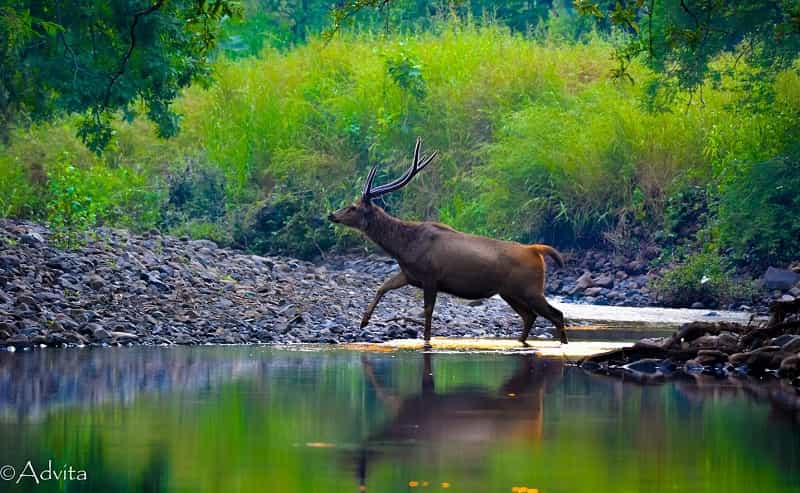
Located in the Hingni of Wardha District in Maharashtra, the Bor Wildlife Sanctuary covers a total area of around 61 sq. km, which includes 2212 hectares of Protected Forest, 3238 hectares of Reserved Forest and 661 hectares of Unclassed Forest. The sanctuary is surrounded by numerous villages, which include tribal and semi- tribal people staying among them.
Fauna
The major attraction of the Bor Wildlife Sanctuary in Maharashtra is its wildlife fauna. An array of the most exotic, the most dangerous, but the most endangered wild creatures of the country seek shelter here in the Bor Wildlife Sanctuary. Diverse species of Tigers, Bisons, Panthers, Blue Bulls, Sambars, Wild Dogs, Bears, Wild Boars, Monkeys, Peacocks, Barking Deer and Chinkaras together comprise the fauna of this wildlife haven in Wardha.
Flora
Since the sanctuary is located towards southern Maharashtra, the fauna of the forest here consists of typical Southern Mixed and Dry Deciduous forest, with majority of species like Teak, Bamboo, Ain and Tendu.
Stays
There are quite a few guest and rest houses in the vicinity of the Bor Wildlife Sanctuary, for visitors who come from far and wish to spend more than a day at the sanctuary. There is the Irrigation rest house and the PWD rest house with minor accommodations in the sanctuary premises itself, to use which, one has to receive a prior permission from the PWD Deputy Engineer.
Dajipur Bison Sanctuary
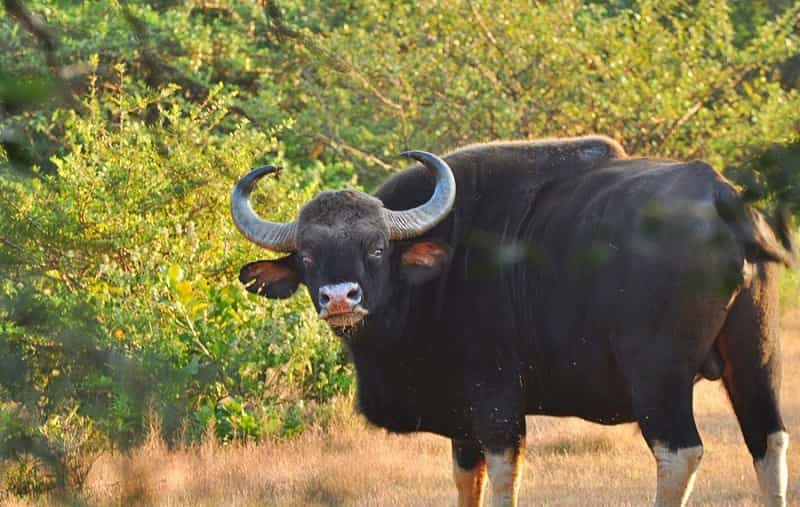
Situated on the outskirts of Kolhapur city and the Sindhudurg district in Maharashtra, the Dajipur Bison Sanctuary lays in the lap of the Radhanagari Dam, in the backwoods. The craggy mountainous terrains contain wildlife and forests in abundance here. The Dajipur Bison Sanctuary is like a jungle resort in the wild and rugged lands of Kolhapur, which is completely off the human habitat. The way to the sanctuary is a typical forest path, lonely and vacant, with thick and dense woods on both the sides of the road. The excitement of visiting the sanctuary and meeting the wildlife therein already begins in the course of traveling towards the place.
Fauna
To attract the tourists here, nature has adorned this sanctuary with a rich wildlife. Since it is famous as a Bison sanctuary, there are Bisons in huge numbers, found in abundance. Other animals like the Wild Deer, Gawa and the Chital are present here. The Bisons and deer comprise of the most exotic collection in the Dajipur Bison Sanctuary. As well as them, other wild fauna is also speculated here. Also, the sanctuary is rich in offering variety of unique and interesting avifauna.
Flora
The animal resort is so scenic in terms of its wild flora that it is known as the destination for nature lovers, in Kolhapur. Wildlife enthusiasts and botanical students and teachers have a lot in store for enlightening excursion at the Dajipur Bison Sanctuary.
Other Attractions Nearby
Apart from the rich wildlife in the sanctuary, there are other places of interest in the vicinity of the sanctuary. There is a Gangagiri Maharaj Math – an old shrine – in the forest area, which can be a truly pleasant place to be after having a rendezvous with the wildlife. Also, there are places for adventure sports and special camps for Trekking that are more to the fun that an outing to the Dajipur Bison Sanctuary promises.
Jijamata Udyan Zoo
Tips on clicks
- Located in South Mumbai, precisely at Byculla, in Maharashtra.
- Home to most of the rare and endangered species of wildlife.
- Open on all days except Wednesday.
- Visiting hours – from 10:00 in morning to 5:00 in evening.
- Ideal visiting season – throughout the year.

Amidst the tired and busy life of South Mumbai lays this old Zoo or Animal Park, named Jijamata Udyan Zoo. This place is named after Queen Jijamata – the proud mother of the brave Chhatrapati Shivaji Maharaj. Since, it was built by the British men; the initial name of the zoo was Victoria Gardens, which later came upon to be Jijamata Udyan. Hence, this zoo is locally popular as Rani Baug, meaning the Queens’ Garden. Rested here in the ear 1861, this is the only existing Zoo in the heart of the Mumbai city, in the times of today. It is home to the various wild creatures which are rare as well as endangered of extinction.
Entering the Zoo
From the external look of it, the zoo just seems like a children’s park among the other low income houses or the Chawls that stand surrounding it. But the garden is too vast from within. The entrance of the park is a huge clock tower which reminds of Italian renaissance and architecture. There are various trees in the Garden which are quite old and yet strong enough to shelter the wildlife surviving within.
Fauna
There is a huge variety of animals in this zoo, but for each of the species, the number of specimens is less. Since these are endangered animals, they are kept in cages to avoid any conflicts with the visitors. There can be seen animals of children’s interest like lion, tiger, elephant, crocodile, bear, hippo, barking deer, wild dogs, etc. Even birds like parrots (of different colors), Mynas, Swans, ducks, eagles, vultures and so on are kept here in the zoo for visitors to have a look at. There is a separate section in the zoo which has snakes in display.
A huge variety of diverse types of snakes and other reptiles like chameleons and lizards are also present. The great King Cobra snake is also a part of this zoo, which adds to the splendor of the wildlife that exists here. The aquatic section consists of water reservoirs with a variety of fishes, toads, frogs, water snakes, crocodiles, turtles and so on. Not just wild, but timid and domestic animals like horse, rabbits and mice are also kept to display.
It is often thought that since it is a zoo, it would be so cruel to keep animals tied up here and away from their natural habitat. But the scene in here is completely different. The Jijamata Udyan Zoo comprises of various habitats which are personal to each of the animals that survive here. Though in cages, yet the place offers them a sufficient area to feel as if they are in their own home and not in some forbidden zoo. This is a unique feature of the Jijamata Udyan Zoo.
Other Attractions in the Zoo
Apart from the wildlife, there is a children’s park in the campus of the zoo. There are different types of games and rides here, which kids and youngsters can enjoy while their parents are busy discussing their experience with the animals. It is a true wonder to be here in the Jijamata Udyan Zoo or the Rani Baug. People resident to Mumbai themselves visit this place quite often. I think, then, it is a must for the new tourists to have a day out of their touring schedule to see this place. It is a true fun place for people of all ages and kinds.
Koyna Wildlife Sanctuary
Tips on clicks
- Located in the Satara District of Maharashtra.
- Spans to a total area of around 424 sq. km.
- Other attractions nearby are the Shivsagar Reservoir and the Koyna Dam.
- Ideal visiting season is from October to January.
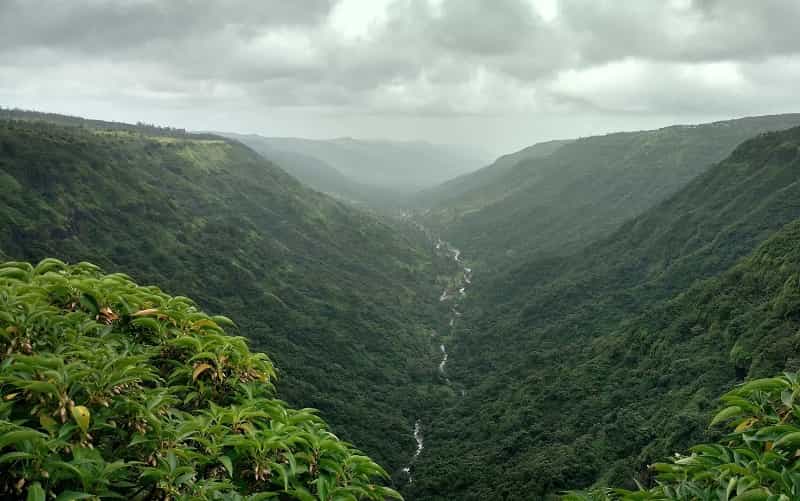
Located in the Western part of Maharashtra, pride of the Satara District, the Koyna Wildlife Sanctuary covers a total area of about 424 sq. km. Both the western and the eastern catchments of the Koyna Dam, which is a major part of the hydroelectric project center in west part of Maharashtra, are in the embrace of this sanctuary. The steep slopes of the Western Ghats on two sides and the large extents of the Shivsagar reservoir together protect the sanctuary a good deal. There is a cover of thick vegetation that connects the sanctuary to the external world. In the south, it has Radhanagari Wildlife Sanctuary.
Fauna
The sanctuary displays a great collection of exotic wild animals and birds. Terrestrial wild fauna like Tigers, Gaurs, Panthers, Sambars, Sloth Bears, Mouse Deers, Barking Deer, Dholes, Otters, Giant Squirrels, Common Langoors, Cobras and Pythons. The avifauna of the Koyna Wildlife Sanctuary includes Woodpeckers like the Heart Spotted, Brown Capped and Rufous Woodpeckers, long tailed Nightjar, Goshawk, and the Fairy-bluebird. What is unique about this sanctuary is that these birds are very rarely found at places other than here, in Western Ghats. Apart from these species, the sanctuary shelters Bufo koynayensis, and unique species of it. It has a special habitat in this sanctuary, quite similar to it original habitat.
Flora
The land and vegetation in the Koyna Wildlife Sanctuary consists of southern tropical forests of evergreen type. Trees like Anjani, Hirda, Jambul, Pisa, Awala, Ain, Amba, Kinjal, Kumbha, Chandala, Bhoma, Umbar, Nana, Katak, Gela, Bibba, Jambha, and so on, are found to be dominating the lands of the sanctuary. Karvi is dotted all through the forests. As well as these major trees, there are climbers, shrubs and medicinal herbs also present among the wild flora of the sanctuary. Climbers such as Shikakai and Garambi, and medicinal herbs like Karvand, Toran, Tamalpati, Ranmiri, Vagati, Dhayati, Narkya, Kadipatta, Murudsheng and so on, are also included among the list of forest vegetations in the Koyna Wildlife Sanctuary.
Quite a few species of wildlife vegetation, which are rare and endangered, exist in the Koyna Wildlife Sanctuary, like Ran – Jaiphal and Garambi, Dhup, Euphoria longan and Elaeocarpus Tectorium. Giant species of trees, like Turpunita Malbarica and Harpullia Arborea that are indigenous to the Western Ghats of Maharashtra can also be seen in the sanctuary premises.
Nandur Madhmeshwar Bird Sanctuary
Tips on clicks
- Located in the Niphad Tehsil which comes under the district of Nashik in Maharashtra.
- Also known as the “Bharatpur of Maharashtra”.
- This sanctuary is a Paradise for the Bird Watching and this is its main attraction.
- Ideal season to visit here is between December and March.
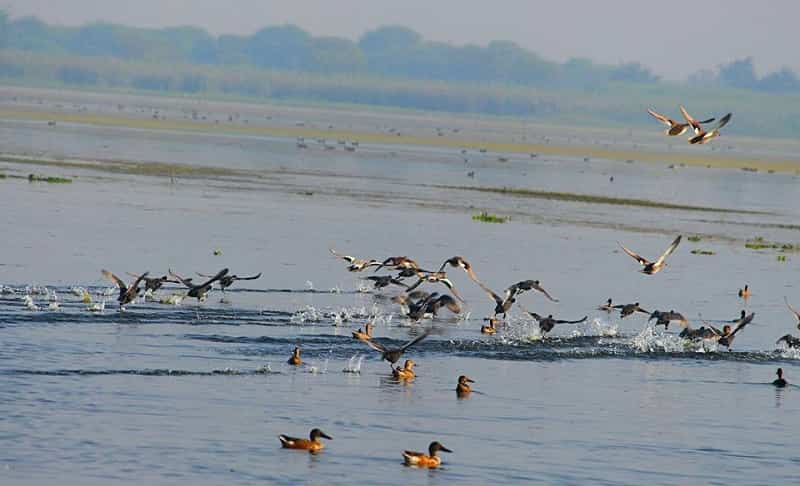
Sited in the Niphad Tehsil in the Nashik District, the Nandur Madhmeshwar Bird Sanctuary stands as the pride of Western Maharashtra. A weir or low dam was built here, from 1907 to 1913, by stone pick up. This dam was built across the River Godavari and was constructed just below the convergence of rivers Godavari and Kodwa, which occurs at Nandur Madhmeshwar. Hence, there are always fluctuations in the water levels in the lake of Nandur Madhmeshwar. Due to a lot o water activities like irrigation and so on going here, the quality of aquatic and wet land vegetation and fauna have enriched. Due to the greens here, this place is called the Bharatpur of Maharashtra.
Fauna
The main attraction of this sanctuary is the wide collection of birds. The Nandur Madhmeshwar Bird Sanctuary is the hub of resident and migrant species of birds. Over 230 diverse types of birds are seen in the forests of the sanctuary, out of which 80 are migrant birds, which visit this place in the winters. Hence, the ideal season to take a tour of the Nandur Madhmeshwar Bird Sanctuary is during December to March – the winter plus spring season. There are grass as well as wetland birds among this vast diversity of bird species offered for the viewers.
Some of the regular immigrant birds are White Stork, Spoonbills, Glossy Ibis, Goose Brahminy Duck, Flamingo, Mallard, Pintail, Wigeon, Pochardds, Gargenery Shoveller, Curlews, Cranes Shanks, Weavers, Pratincole Wagtails, Godwits, etc. Some resident birds spotted in the sanctuary are Black Ibis, Teals, Spot Bills, Little Grebe, Egrets, Cormorants, Stork, Vultures, Kites, Herons, Harriers, Quails, Buzzards, Osprey, Partridges, Water Hens, Eagles, Swifts, Sand Pipe, Peafowl, Grey hornbill, etc. With such an enormous diversity among the bird species, all possessing vibrant colors and blazing flights, the Nandur Madhmeshwar Bird Sanctuary is not wrongly called the Paradise for Bird Watching and Bird Lovers.
As well as the amazing sights of beautiful birds, the Nandur Madhmeshwar Bird Sanctuary also displays few of the wild terrestrial fauna, like the Palm Civet, Ottar, Jackal, Fishing Cat, Wolves, Mongoose, etc. There is a variety of snake species in the sanctuary. Aquatic fauna of the sanctuary has been recorded to have over 25 different species of fish.
Flora
Over 450 species of plant, inclusive of trees, shrubs, herbs, and climbers, comprise the floral wildlife of the Nandur Madhmeshwar Bird Sanctuary. Apart from this, over 80 aquatic plants adorn the wetland flora of the forest. The outskirts of the sanctuary possess trees like Babul, Tamarind, Neem, Jamun, Vilayati, Maharukh, Chinch, Pangara, Mango, Nilgiri, and so on. Some areas in the environs of the sanctuary, which are slightly submerged, consist of crops like Wheat, Sugarcane, Jowar, and various Vegetables.
Radhanagari Wildlife Sanctuary
Tips on clicks
- Located in the Kolhapur district of Maharashtra.
- Spans to a total area of 351 sq. km approx.
- Ideal visiting season – between March and May.
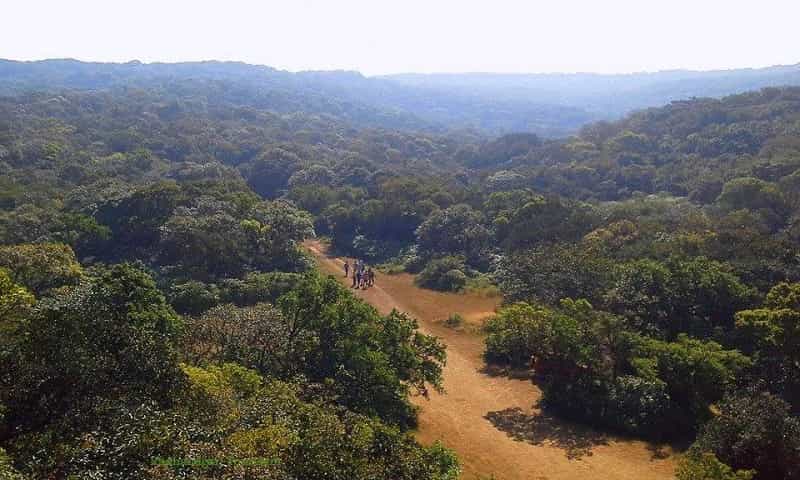
The region between the two major water reservoirs namely Laxmi Sagar and Shahu Sagar in the Kolhapur district possesses the Radhanagari Wildlife Sanctuary that spans up to a total area of 351 sq. km. approximately. Steep escarps heave the entire area of the sanctuary. With soil reddish in color and literatic in nature, there is bauxite found in large amounts from the Sadas Plateaus in this region.
Fauna
Bison, which is a well known wild animal – the tallest and the most splendid creature of all the Wild Bulls and Oxen, is found in large numbers here. The grazing jungles here can give you a view of the bulls and calves racing, just for retreating themselves. Other animals who seek shelter in the wild environs of the Radhanagari Wildlife Sanctuary are Sloth Bear, Leopards, Wild Boars, Barking Deer, Giant Squirrel, Sambar, Mouse Deer, Wild Dogs, and so on. As well as these animals, there are reptiles, amphibian and avian population in the jungles. Birds like Vultures, Eagles, Owls, Nightjars, Sand pipers, Owlets, Kingfishers, Warblers, Bee- eaters, Woodpeckers, Bulbuls, Hornbills, Flycatchers, Doves, Wagtails and Sunbirds are seen here on a common basis.
Flora
Another important factor of the Radhanagari Wildlife Sanctuary is its wildlife flora, which is Southern Semi- evergreen forest type, as well as the Southern Evergreen Forest and the Southern Moist Mixed Deciduous Forest. The forest crop density is in the range of 0.4 to 0.9. Some types of trees found here on a major basis are Ain, Jambul, Kinjal, Amba, Awala, Pisa, Hirda, Anjani, Kumbha, Chandala, Nana, Jambha, Katak, Bhoma, Umbar, Bibba and Gela. Karvi is spread all over the area. Shikakai and Garambi are the most commonly seen climbers of the Radhanagari Wildlife Sanctuary. Tamalpatra, Karvand, Ranmiri, Vagati, Toran, Kadipatta, Murudsheng, Dhyati, etc. are major shrub types in this place. Bamboo is also found to be a part of the wildlife vegetation in the sanctuary. Many medicinal herbs and plants are also located within the circumference of the sanctuary.
Tadoba National Park
Tips on clicks
- Located in between Chandrapur and Nagpur districts of Maharashtra.
- Popular as the Jewel of Vidarbha region.
- Spans to a total area of 120 sq. km.
- Timings to visit the national park – 6 a.m. to 11 a.m. and 3 p.m. to 6 p.m.
- Tuesday closed.
- One of the oldest national parks in the state.
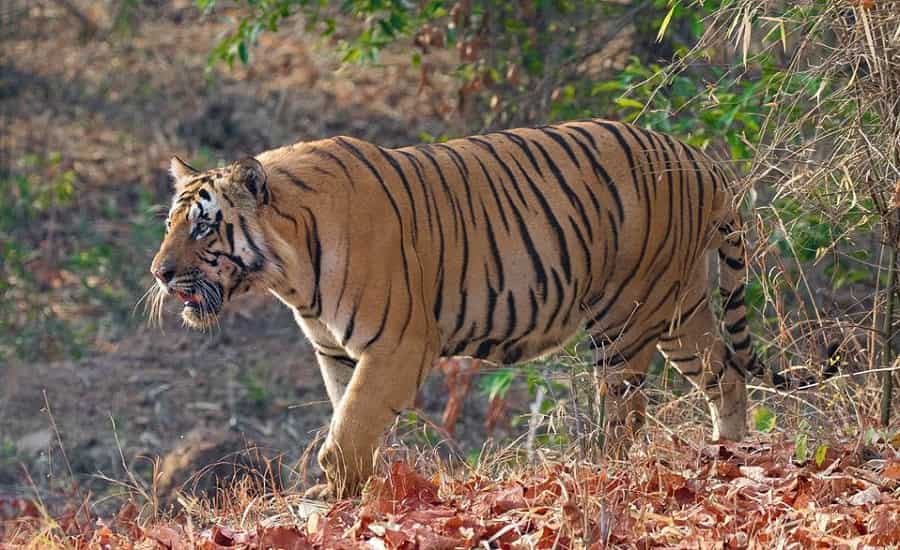
The Tadoba National Park is a dense and compact national park with a total area of 120 sq. km. It is roosted at a height of over 200 m and spans at a distance of 100 m south from Nagpur and just about 45 km north from Chandrapur districts in Maharashtra. This sanctuary or national park is a haven for people enthusiastic about wildlife. Hence, the Tadoba National Park is also famously known as the Jewel of Vidarbha. This national park is probably the oldest one in Maharashtra state and also houses a natural wildlife safety project named Project Tiger Reserve, since the year 1993. Gond Tribals once over populated the region of Tadoba and its vicinity.
There is a local deity named ‘Taru’ who used to be worshipped here, and the area ‘Tadoba’ has derived its name from there itself. According to a legend, the deity was killed in a fight that was an epic. Taru had fought with a tiger and died. The deity is still prayed to and worshipped by the villagers local to the deity Tadoba.
Flora
The Tadoba National Park is rich in forest having an extensive collection of deciduous trees like the Teak, Gardenia, Satinwood, Jamun, Mahua, Bamboo, etc. There are other tree species that are comparatively less observed here, like the Arjun, Ain, Bija, Behada, Bel, Bor, Dhawada, Chichwa, Mowai, Kusum, Rohan, Phetra, Salai, Shisham, Semal, Shivan, Sissoo. Tendu, Surya, and Sirus.
Fauna
The fauna of this place consists of animals which are of major importance and attraction. You can find the Tiger in abundance, herds and herds of Chital, the Sambar which is the stately pride, Barking Deer that is elusive, Chausingha with fleeting feet, Nilgai which is the robust one, Gaur – the majestic, Sloth Bear which is a shy one, Wild Dog that whistles, the Wild Boar that is omnipresent, and the Leopard that is stealthy. Other animals like the Palm Civet, Small Indian Civet, the flying Squirrel, the Ratel, etc. are found in the darkness of the night.
Birds are attracted frequently to the lake that is housed by the Tadoba National Park. Avifauna, inclusive of the Cattle Egrets, Jacanas, Purple Moorhens, etc., is found in the forest. To add to the wildlife fauna of the Tadoba National Park, there are crocodiles that stay at a separate breeding farm, in the marshes.
Other Attractions
The location of the Tadoba National Park itself is a major attraction. Yet, there is the Tadoba Lake and a few ancient villages in the vicinity of the sanctuary. The night view of this national park is just unforgettable. Most of the wildlife population, being in close proximity with which is a challenge in itself, comes out at night time in the forest. There are night safaris arranged for visitors who request for the same. There are two watch towers in the campus of the national park from where the wild life can be easily sighted. Also, an option of trekking is also available as an adventure activity when in the Tadoba National Park. There are 4 Machans, meaning stables, to enable safe animal watching from a distance.
Important Information
The best time to visit the place is between months November and June. Spending Monsoons here is not a good option. There are mini buses, gypsies, and jeeps available for safari in the jungle. Tourist guides are also provided with a vehicle. A binocular, torches, glasses, caps, mosquito repellent and full body covering clothing is necessary while inside the jungle, for a comfortable and enjoyable safari.
Wan Sanctuary
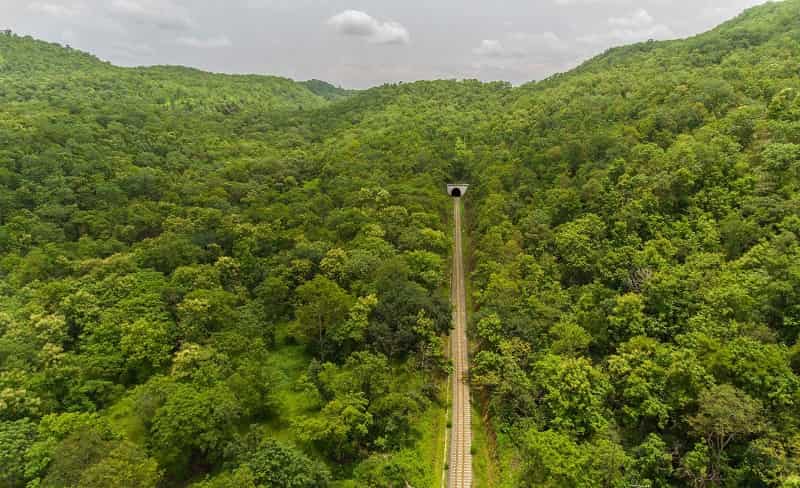
The Melghat region of the Amravati district in Maharashtra is adorned with the wonderful Wan Sanctuary – another amazing wildlife haven in the state of Maharashtra. This is an extension to the Melghat sanctuary and lies to its southeast. It has been named separately, Wan Sanctuary – meaning the sanctuary of true forest – and yet it is considered as an inseparable element of the Melghat sanctuary. Pertaining to a healthy biodiversity, the floral and faunal life in this sanctuary forest is rich.
Flora
Since the terrain of the sanctuary is hilly and craggy, the forest here possesses Southern Tropical Dry Deciduous trees. Main tree species in the forest are Teak, Tiwas, Air, Dhawda, Moha Bamboos, Kusum, Tectona Grandis, Lendia, Aola, etc. The most widely spread tree in the forest is of bamboo. The forest area also possesses rich medicinal herbs.
Fauna
Apart from the rich vegetation, the Wan Sanctuary is abundant in wildlife fauna, with the presence of Tigers, Wild Dogs, Hyenas, Sambars, Bisons, Wild Boars, Barking deer and so on. The ideal season to visit this place is during the time between October to February, but for natural leisure. If you don’t wish to miss a single animal in the sanctuary, then April to June is the best time.
